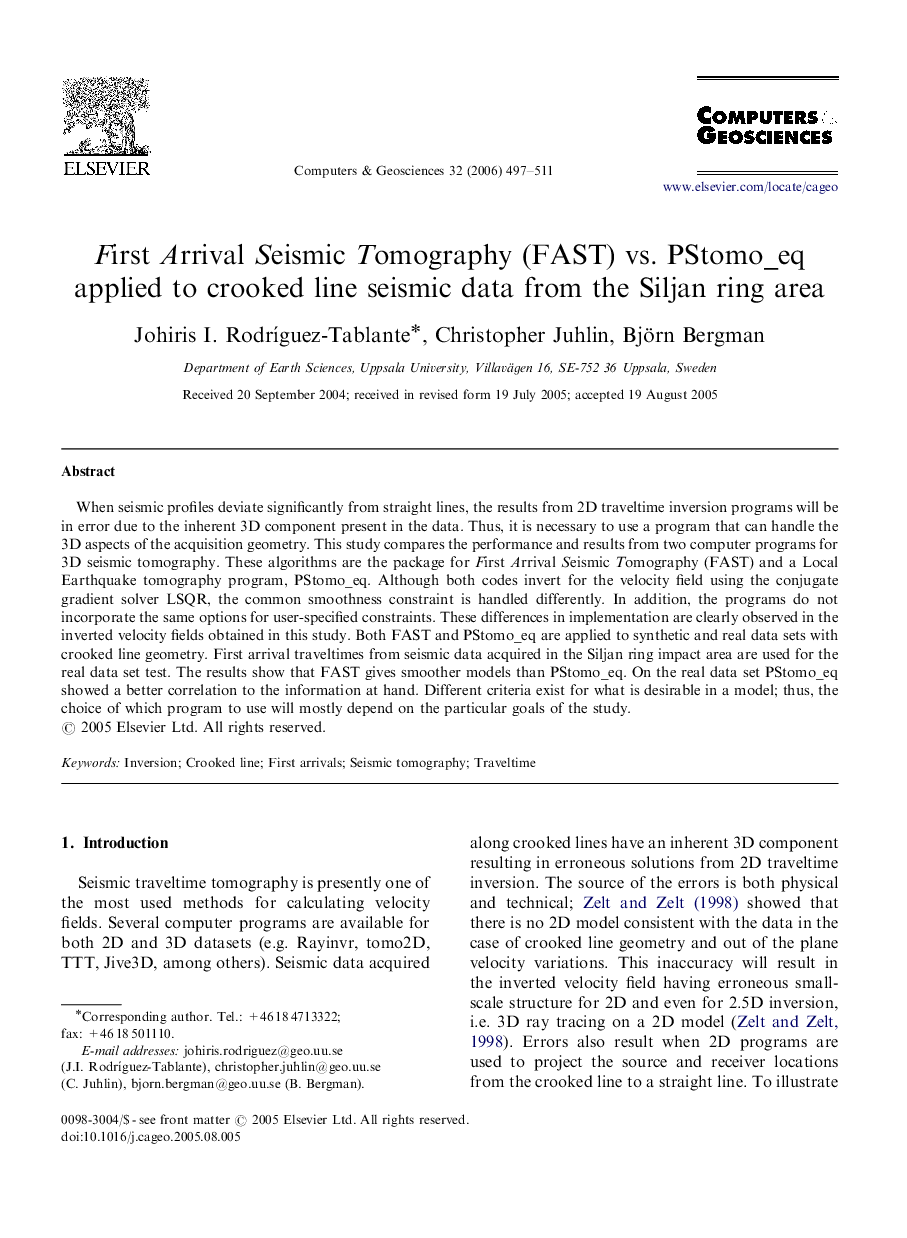| Article ID | Journal | Published Year | Pages | File Type |
|---|---|---|---|---|
| 508549 | Computers & Geosciences | 2006 | 15 Pages |
When seismic profiles deviate significantly from straight lines, the results from 2D traveltime inversion programs will be in error due to the inherent 3D component present in the data. Thus, it is necessary to use a program that can handle the 3D aspects of the acquisition geometry. This study compares the performance and results from two computer programs for 3D seismic tomography. These algorithms are the package for First Arrival Seismic Tomography (FAST) and a Local Earthquake tomography program, PStomo_eq. Although both codes invert for the velocity field using the conjugate gradient solver LSQR, the common smoothness constraint is handled differently. In addition, the programs do not incorporate the same options for user-specified constraints. These differences in implementation are clearly observed in the inverted velocity fields obtained in this study. Both FAST and PStomo_eq are applied to synthetic and real data sets with crooked line geometry. First arrival traveltimes from seismic data acquired in the Siljan ring impact area are used for the real data set test. The results show that FAST gives smoother models than PStomo_eq. On the real data set PStomo_eq showed a better correlation to the information at hand. Different criteria exist for what is desirable in a model; thus, the choice of which program to use will mostly depend on the particular goals of the study.
